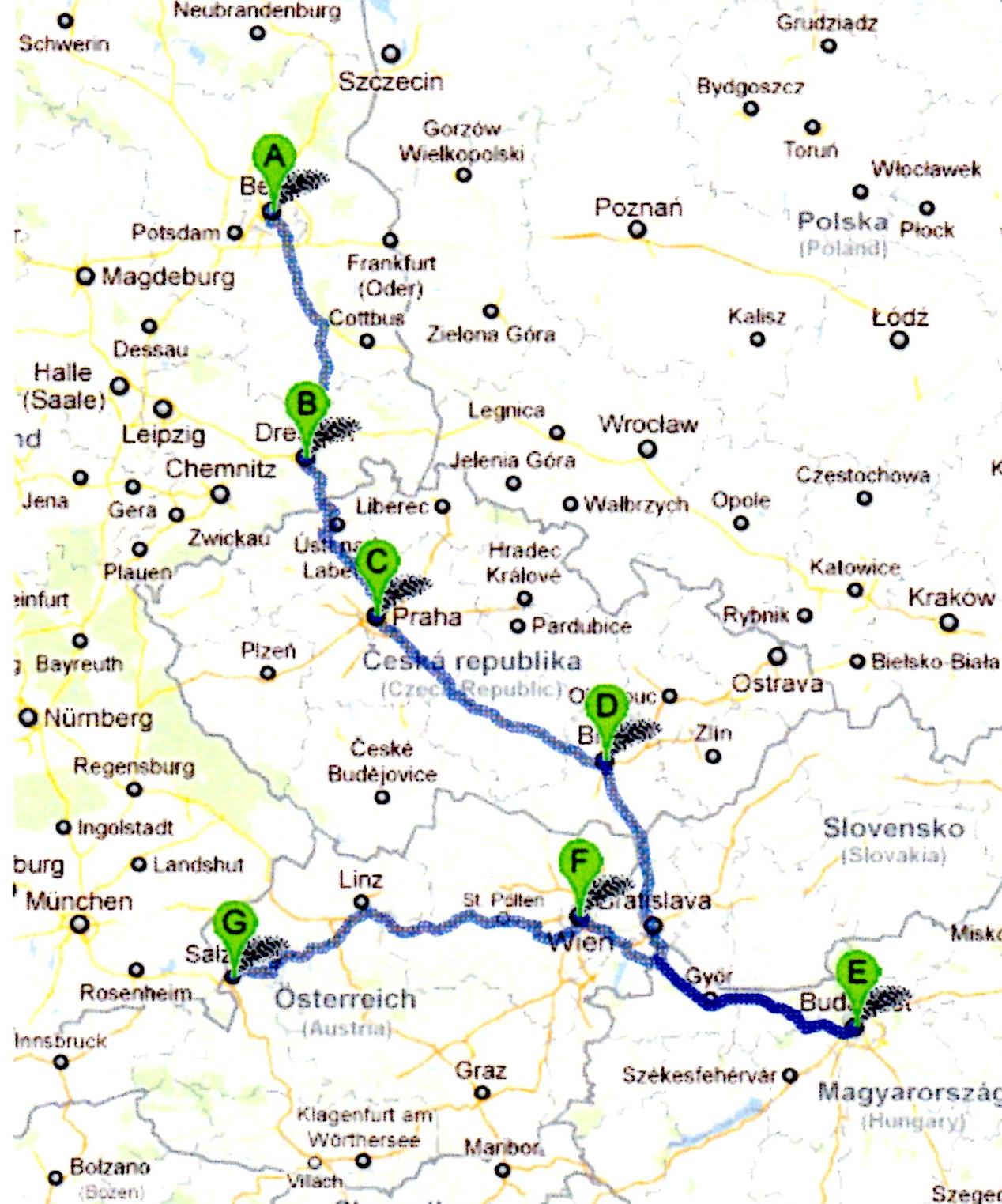CENTRAL EUROPE 2011
Day 5
September 6 Tuesday
POTSDAM
We got any early start today and were on the S-bahn
(above ground metro) by 9:00AM and headed towards Potsdam. It was a cool but
beautiful morning. It was a half hour ride on a fast tram.
Potsdam is a separate city from Berlin. It is a place where the beauty
and architecture wasn't destroyed during WW II.
There are a lot of palaces and beautiful homes. We stopped in the info
center in the bahnhof (train station) and booked a bus tour for 11:00.
There were a number of tours but we wanted to go inside Sansoucci. We
took a bus tour - a double decker bus. The
guide spoke both German and English. The PA system on the bus wasn’t very good
and the young lady guide spoke English very rapidly.
At times it was hard to understand her. The bus went through very
interesting parts of town.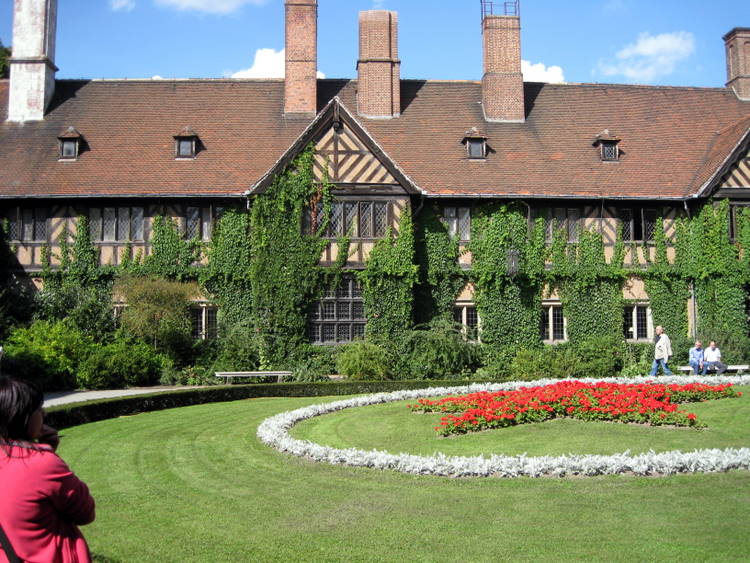
Our first stop was at Cecilienhof Palace,
which had played a special role after the end of WWII as the meeting place of
the victorious powers. On
August 8, 1945 at the Potsdam conference basic decisions to settle post-war
problems were taken by Truman, Stalin and Churchill. Schloss
Cecilienhof was built in 1913-17 as
the last Prussian palace building. It
was designed as a half timbered complex surrounded by several courtyards.
Today it has become a memorial dedicated to the Potsdam Conference and is
used as a hotel.
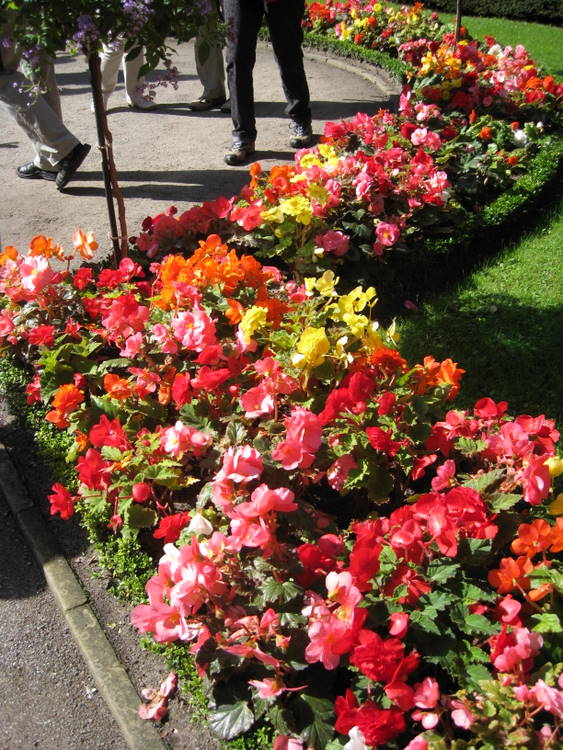 We didn't go inside, but spent time outside.
Our guide gave us excellent information about the significance of this
beautiful building. There were a number of lovely flower gardens.
I was particularly fascinated by the great variety of chimneys.
We didn't go inside, but spent time outside.
Our guide gave us excellent information about the significance of this
beautiful building. There were a number of lovely flower gardens.
I was particularly fascinated by the great variety of chimneys.
The bus traveled through several very stately
neighborhoods with huge houses.
Our
next stop was Schloss Sanssouci.
SANSSOUCI PALACE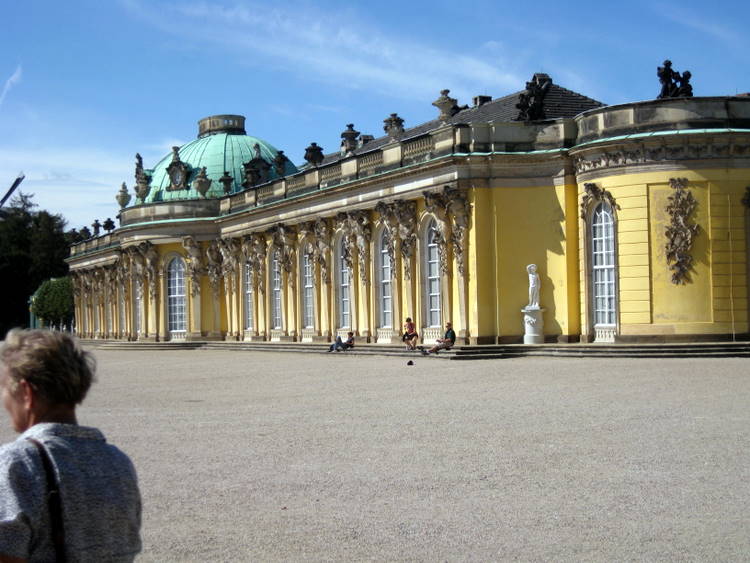
Sanssouci Palace, a masterpiece of Frederician
rococo, was built by Frederick the Great as a summer residence based on his own
designs and those of architect Georg Wenzeslaus von Knobelsdorff.
It was completed in 1748 after three years of work.
“Sanssouci”, meaning “free of care”, is a one-story three-wing
complex located high up on a vineyard especially created for it.
The palace was the favorite residence of the king, who relaxed there from
duties of state by playing music and reading.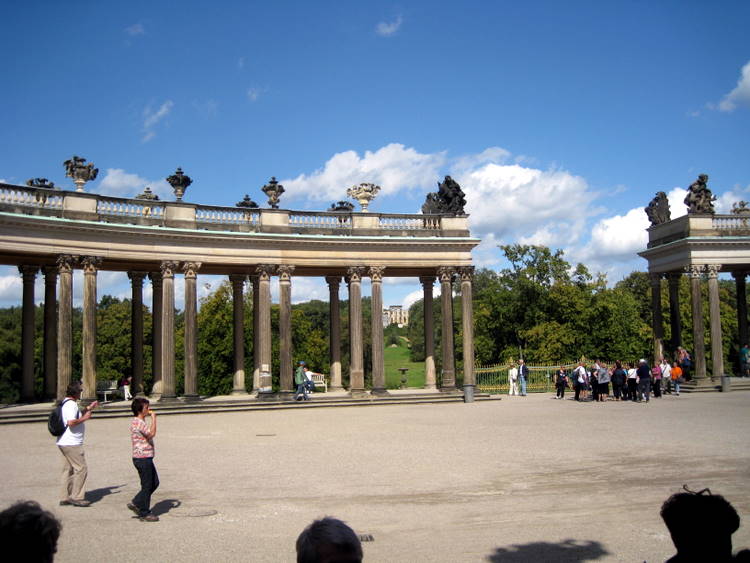
The bus parked in a special tour bus lot and let us
off. We had to walk some
distance to the palace, entering from the rear side.
This side is surrounded by a semi-circular colonnade which faced the
ruins of another palace at some distance away.
We entered as a group. Photography
was allowed but you had to purchase a tag for your camera.
We first entered the vestibule which had fluted marble Corinthian columns
with gold capitals. The painted
ceiling depicted Flora, the Roman deity of flowering and fertility.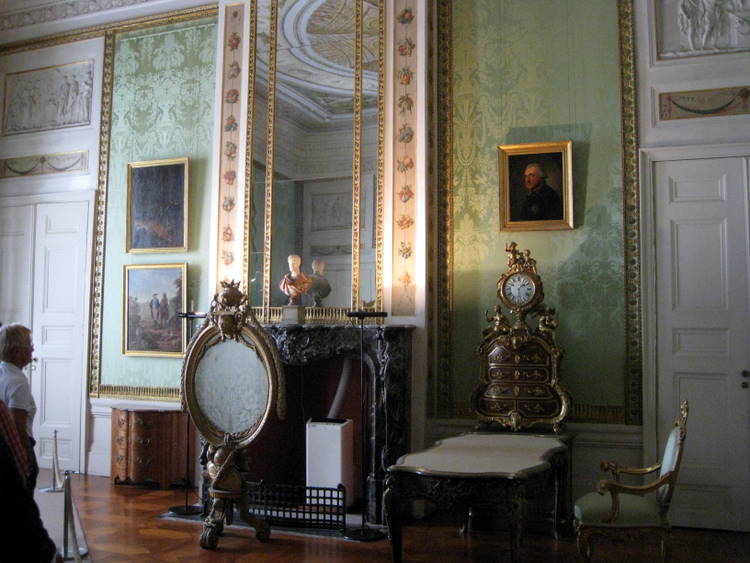
After passing through a long hall known as the
Little Gallery because it contained a large collection of Fredericks favorite
works of art, we came to Frederick’s bedchamber and study.
On display was the chair in which he died. We
visited several other beautiful rooms before we came to the center of the palace
and the Marble Hall. 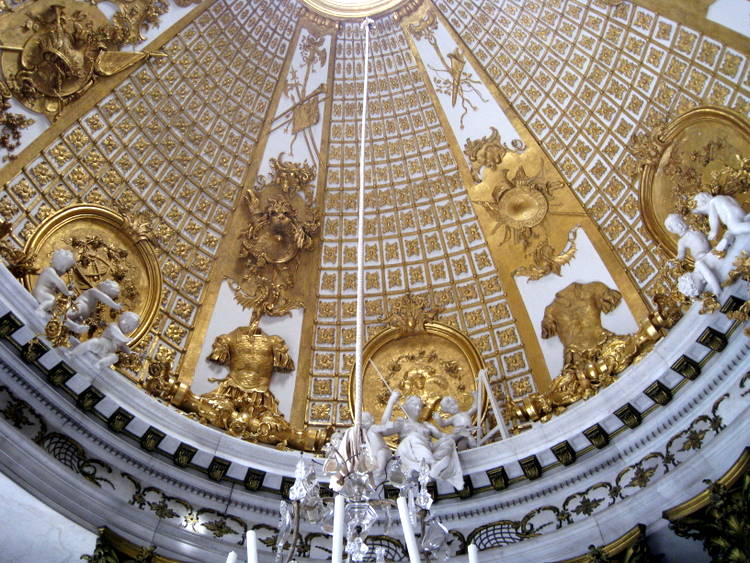
It was a large
oval domed hall. The dome was richly
decorated with gold and a series of figures representing architecture, music and
poetry, painting and sculpture, astronomy and geography.
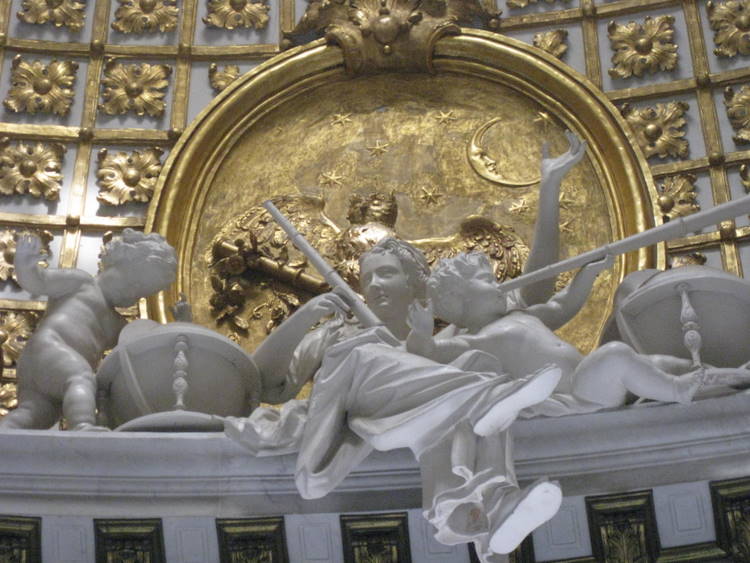
There were countless number of putti (little angels) around these
figures. After passing through several other rooms, we came to the front side of
Sansscouci and the view over the vineyard. The
façade contains a large number of statues symbolizing Bacchus, the god of wine,
plus more putti and a number of vases.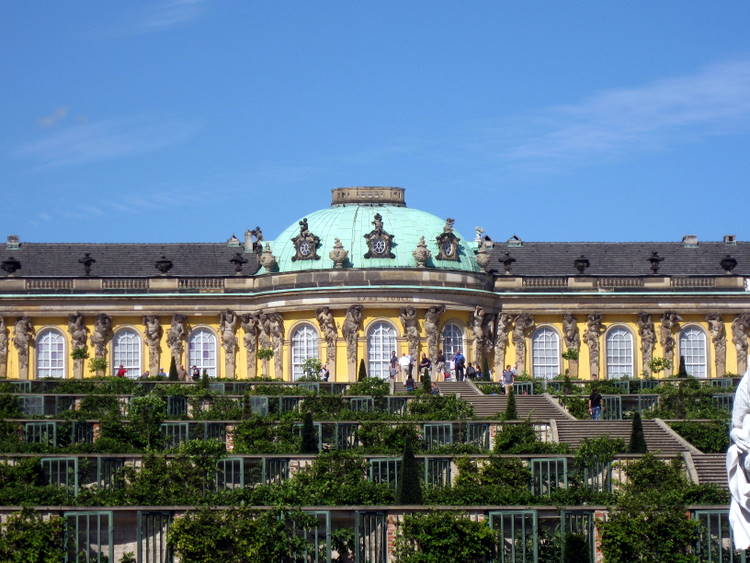
We started down the steps, thinking maybe we were
just going a level or so for a view…wrong!
We were going to walk all the way to the bottom.
My wife was concerned about her knee, but we made it.
At the bottom was a large fountain and the view back to the palace was
spectacular. We walked through some
beautiful gardens, stopping at the exterior of the royal chapel, which was not
open. 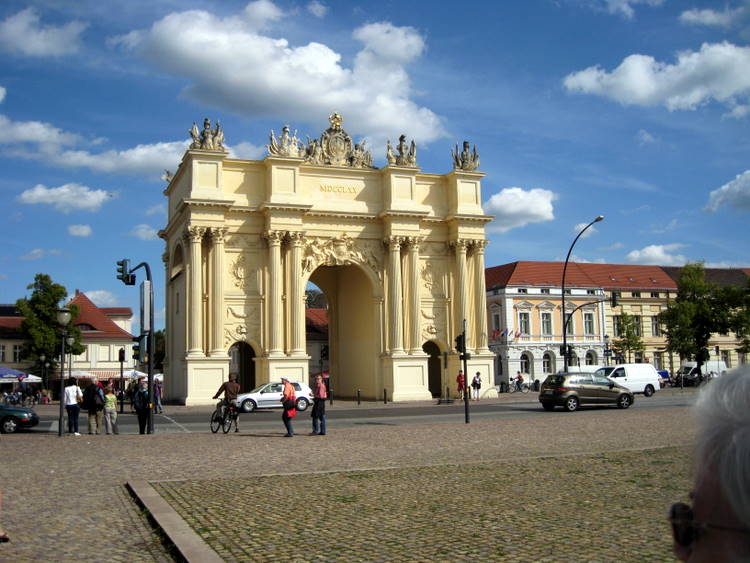
We ended the tour near Potsdam’s own Brandenburg
Gate which was in town. This all was
an unexpected walk. If you take a
bus tour of Sanssouci Palace, be sure to ask about way you will get back to town
from the Palace. The entire tour lasted four hours.
In town there were a number of sidewalk cafes.
We stopped at Le Sorelle and spli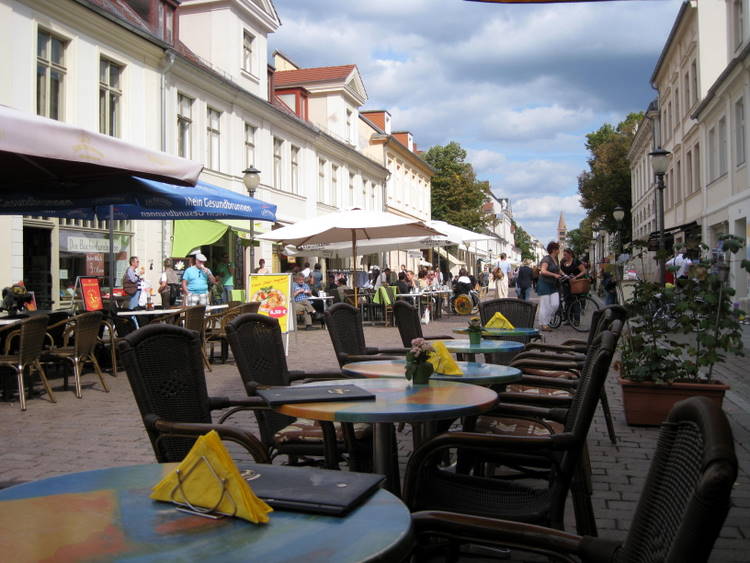 t a schnitzel and
potato salad. We took a bus back to the bahnhof and caught the S bahn back to
our apartment stop.
t a schnitzel and
potato salad. We took a bus back to the bahnhof and caught the S bahn back to
our apartment stop.
A travel tip. We
became aware on the train to Potsdam that we did not have a “C” ticket in
our Berlin Welcome Card. Going to
Potsdam required that. Most everyone
in Berlin and the other cities that we will visit must have had permanent passes to
all the transportation as we rarely saw anyone put a ticket in the toll box. We
never saw anyone checking tickets. To
be safe on the way home, we purchased just a “C” in a tobacco shop in the
bahnhof. We will find later
that is difficult to find a place that sells metro tickets.
One thing that my wife wanted to see before leaving
Berlin was the Pergamom Altar in the Pergamonmuseum on Museum Island near the
Berlinerdom. We got back to our stop
at 4:45 and the museum closed at 6:00. We weren’t that far away and got there
in 20 minutes.
THE PERGAMONMUSEUM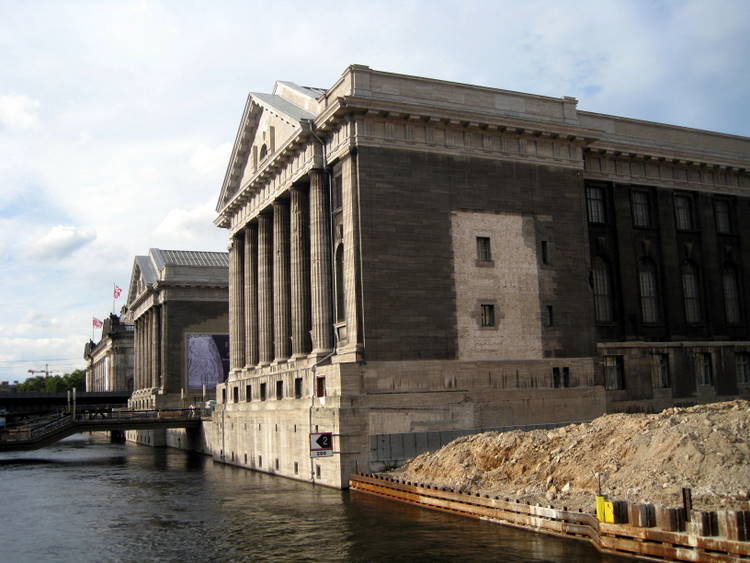
The Pergamonmuseum was built between 1910 and 1930,
and was the last of the five museums constructed on what is known as Museum
Island. It was designed with three
separate wings, now housing the Collection of Classical Antiquities with the
three halls of Greek and Roman architecture, the Museum of the Ancient Near East
and the Museum of Islamic Art. The
museum is currently being restored and extended in certain sections.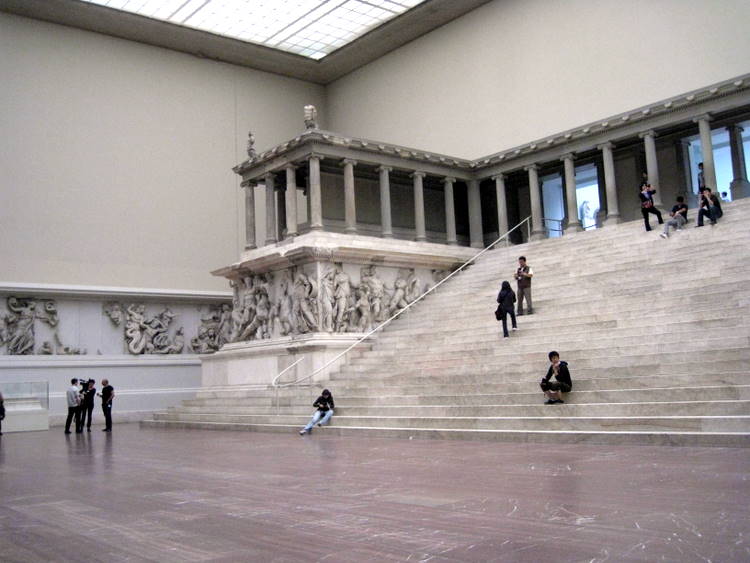
The first section that one enters is the Collection
of Classical Antiquities which dates back to the time of the Brandenburg
electors and was founded in 1830. The
main attraction is the Pergamon Altar (circa 170 BC).
It encompasses the entire wall of this very large room.
The frieze on it and the other walls of this room, is regarded as one of
the masterpieces of Hellenistic sculpture and depicts the battle between the
gods and giants. 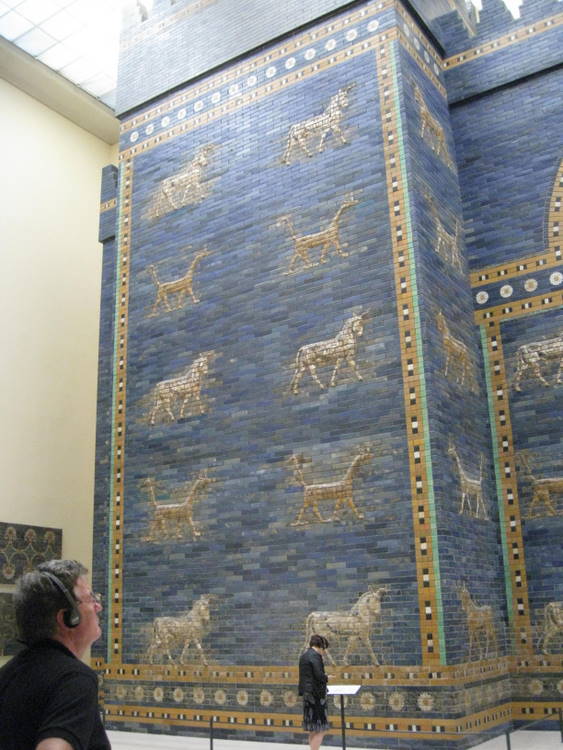
In another
room is the Market Gate of Miletus which dates back to the early 2nd
century. Going through
this gate takes you into the Museum of the Ancient Near East.
The main attractions include the huge architectural reconstruction of the
Ishtar Gate with its colorful splendor, and the Processional Way of Babylon
dating back to the time of Nebuchadnezzar II (6th c. BC).
It was a beautiful color of blue with magnificent 3 D lions parading the
walls.
We wanted to see the Museum of the Ancient Near
East but time only allowed us a quick glance.
It would be worth a trip back to Berlin just to spend more time in this
museum. Maybe next time we could
also visit the other four museums on the island.
We walked back to the front of the Berlinerdom and
took more pictures.
We stopped at the Radisson hotel where the big fish
tank is and had drinks served by the same bartender.
Then we walked a block more toward our hotel and stopped in Block House -
steak chain - for dinner. It was very crowded.
It was getting cool out but there were heaters in the outdoor café. It
was a rather good steak.
This is our last night in Berlin.
We catch a 10:30 train to Dresden in the morning.
We really love Berlin. There
is so much to see. Even though we
saw all of the highlights, there is a lot more to see.
We want to come back.


 We didn't go inside, but spent time outside.
We didn't go inside, but spent time outside.






 t a schnitzel
t a schnitzel 


